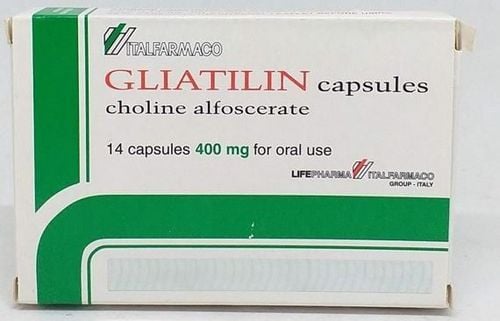This is an automatically translated article.
A subdural hematoma is a blood clot that forms in the subdural space, usually after a head injury. This is a serious surgical disease, often requiring cranial surgery. Surgery to remove subdural hematoma is a measure to solve the hematoma compressing the brain parenchyma.1. What is a subdural hematoma?
A subdural hematoma is a condition in which a blood vessel in the subdural space ruptures, causing a hematoma to form in the subdural space, the space between the dura mater and the arachnoid membrane, usually after traumatic brain injury.2. Causes of subdural hematoma
The cause of a subdural hematoma is a severe traumatic brain injury that ruptures the superficial or glomerular veins in the cerebral cortex or the lateral wall of the venous sinuses.Common causes of subdural hematoma include:
Traumatic brain injury: This is the most common cause. Brain atrophy stretches blood vessels and increases the risk of bleeding even with very minor trauma. Coagulation disorders that cause spontaneous subdural bleeding such as anticoagulants (vitamin K antagonists, antiplatelet agents), hemophilia (haemophilia A, haemophilia B), thrombocytopenia. Cerebral vascular malformation. Hemorrhagic meningioma Complications from neurosurgery

Phẫu thuật lấy máu tụ dưới màng cứng nhằm giải quyết máu tụ chèn ép nhu mô não
3. Symptoms of subdural hematoma
A subdural hematoma usually presents with symptoms soon after the injury. The severity of symptoms depends on the duration, rate of bleeding, and size of the hematoma.Consciousness disturbances: Struggling, excited, comatose. The patient may be comatose at the time of injury or have a gradual decline in consciousness and coma after a period of awakening. If the large hematoma compresses the brain parenchyma, there will be signs of increased intracranial pressure such as headache, vomiting, dilated magnetic fields, stiff neck, even convulsions. , cranial nerve palsy. Dilated pupils on the same side of the lesion or on the opposite side of the lesion if the brain stem is displaced from the opposite side. Autonomic signs such as bradycardia, increased blood pressure, and irregular breathing. temperature disturbances.
4. Complications of subdural hematoma
Subdural hematoma often leaves complications and sequelae such as:Movement disorders, neuropsychiatric disorders Hemiplegia, plant life Epilepsy - Carotid - cavernous sinus fistula vascular complications such as aneurysm vascular, thromboembolism Late intracerebral hematoma Infection: Encephalitis, meningitis, brain abscess Hydrocephalus.

Máu tụ dưới màng cứng thường để lại các biến chứng như động kinh
5. Subdural hematoma surgery
Treatment of a subdural hematoma depends on the rate at which the hematoma forms, the size of the hematoma, and the clinical symptoms.If the subdural hematoma is small, asymptomatic, or asymptomatic, sometimes the patient only needs medical treatment for symptoms and careful monitoring. Because the body will secrete substances that dissolve blood clots.
Medical treatment should be carried out immediately after the accident. The goal of medical treatment is to prevent brain damage secondary to a hematoma or increased intracranial pressure.
If new signs are present, condition worsens, or cranial CT scan shows an enlarged hematoma, cranial surgery may be necessary. Indications for surgical removal of a subdural hematoma include:
Acute subdural hematoma with clear space Subdural hematoma causing midline displacement > 5 mm or hematoma size > 10 mm Subdural hematoma had worsening consciousness, based on the Glasgow coma scale down 2 points from baseline, with a hematoma on CT-Scan brain showing a large lesion requiring decompression surgery. Subdural hematoma with progressive pupillary dilation, asymmetric dilation, progressive focal neurologic signs. A subdural hematoma that causes elevated intracranial pressure (above 20 mmHg) requires early surgery. Surgical methods to remove a subdural hematoma include drilling a hole in the skull or opening the skull cap for decompression.
Skull hole drilling : Is the process of making a small hole on the site of a hematoma formed by drilling through the skull. Through these small holes, the hematoma can be sucked out as well as pumped to drain the hematoma. The surgeon will use a low-pressure suction machine to remove the hematoma, and avoid sucking into the healthy brain tissue, it is possible to pump water for the hematoma to be loose, drifting out on its own to make it easier to aspirate. The incision will be sutured closed or skin clamps used. This is the optimal surgical method to remove the subdural hematoma with high efficiency, without cutting the skull, helping to reduce the risk of postoperative complications. Since then, patients recover faster. Craniotomy Decompression: Is the process of exposing the brain and meninges by cutting a part of the skull. This method helps reduce pressure inside the skull and opens the way to remove the hematoma. The cut part of the skull is then repositioned and fixed in place. In summary, subdural hematoma surgery is a difficult technique that needs to be performed by qualified medical facilities with a team of trained doctors. The treatment requires comprehensiveness, perseverance to follow the patient and strictly implement the technical process to have the opportunity to minimize the patient's symptoms.
Subdural hematoma surgery is performed routinely at Vinmec International General Hospital with modern equipment and machinery and a team of doctors who are top experts who can perform imaging and diagnosis. Diagnosis and detection of cranial pathologies for high diagnostic and treatment efficiency.
Please dial HOTLINE for more information or register for an appointment HERE. Download MyVinmec app to make appointments faster and to manage your bookings easily.













